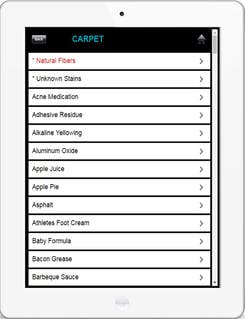“If your job entitles you, you probably take a sabbatical every seven years, which means you get a year of paid leave to do whatever you want to further your understanding of the world. During your sabbatical, you usually are expected to do research and perhaps write a book — in other words, keep working.” This is a classic definition of the term and is usually associated with clergy, missionaries, professors who are related to the teaching profession. However, millions of Americans have been forced to take an unpaid leave of absence.
The priority of everyone is to do all they can to survive this leave of absence. However, it would be wise to use some of the time to educate yourself on your selected craft. For professional cleaners, this means educating yourself to shore up any weaknesses. Depending on your financial situation, you can purchase online training classes. The IICRC has approved some online courses, which are available to take during this time. There are also many avenues to do research online with no cost to you except for your time (which you, unfortunately, have available). Our suggestion is to locate blogs such as this one to read and research any articles available. Industry magazines like Cleanfax have a wide diversity of articles on business, chemistry, equipment, cleaning diversifications, etc. Most manufacturing websites will have detailed instructions on specific products. Many cleaners use chemical products without a clear understanding of their composition, their intended uses, their safety profile, etc. In short, the amount of material is in abundance.
One area of weakness that I have observed over the years among professional cleaners is their level of expertise in removing spots and stains. The good news is that spotting can be readily done in the lab or place of business. First, collect carpet and fabric samples. This can come from leftover carpet or fabric samples from under cushions of chairs from friends and family. Second, collect items from your refrigerator, pantry, office desks, dressing room, etc., to spot or stain your selection of carpet or fabric. Pick the items that you commonly run across. Mustard is often used to test the skills of cleaners, but really how often do you run into mustard. Do not go crazy in your application as most typical spots and stains are on the surface and have not saturated fabric or carpet. Third, collect a diverse group of spotters to be used in your training. Fourth, collect towels and a means of extraction, even if it means rinsing under a faucet and drying with a hairdryer.

Now you are ready to start. Watch any spotting videos or charts online. Review online each of the products collected. Start trying to remove each spot and stain. Keepworking on the type of spot until you get proficient at its removal. A few questions to consider after you have gone through this process. Which fibers were protected? Did the protection make it easier to remove? Could you distinguish between nylon and polyester fibers?
Did you see which fiber was easier to spot? Were some spots or stains easier to remove from nylon or polyester? What differences did you see between natural or synthetic upholstery fabrics? This naturally leads you to research different fibers. In short, you have improved your spotting ability for the day when you get to start cleaning again. You have started your quest in seeing that the type of fiber or fabric matters in anticipating the realistic outcomes.
The principle that we are encouraging is to take advantage of your slower business cycle and step up your game. The lessons learned from this forced sabbatical will give you a model to follow in future seasonal slowdowns. An old Latin proverb, “Carpe Diem”, seize the day is the way to fight back against this Pandemic. May your business thrive in the future and the intentional training steps taken will make you a better cleaning technician.
